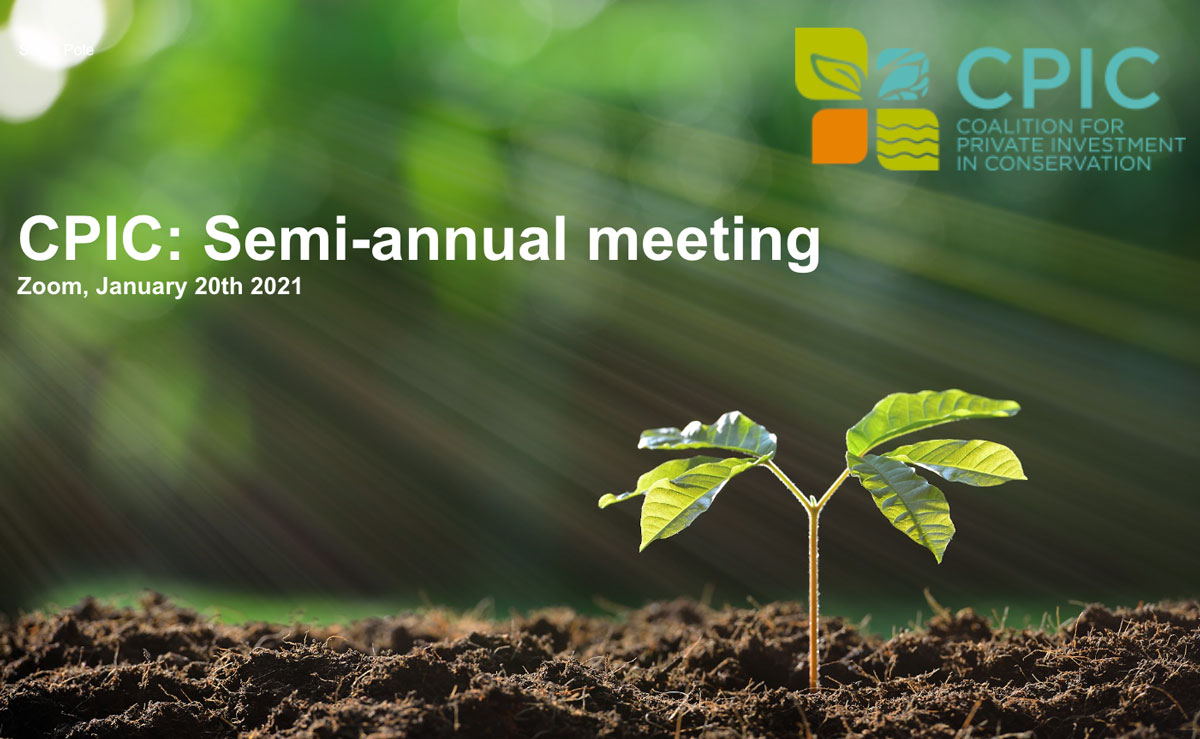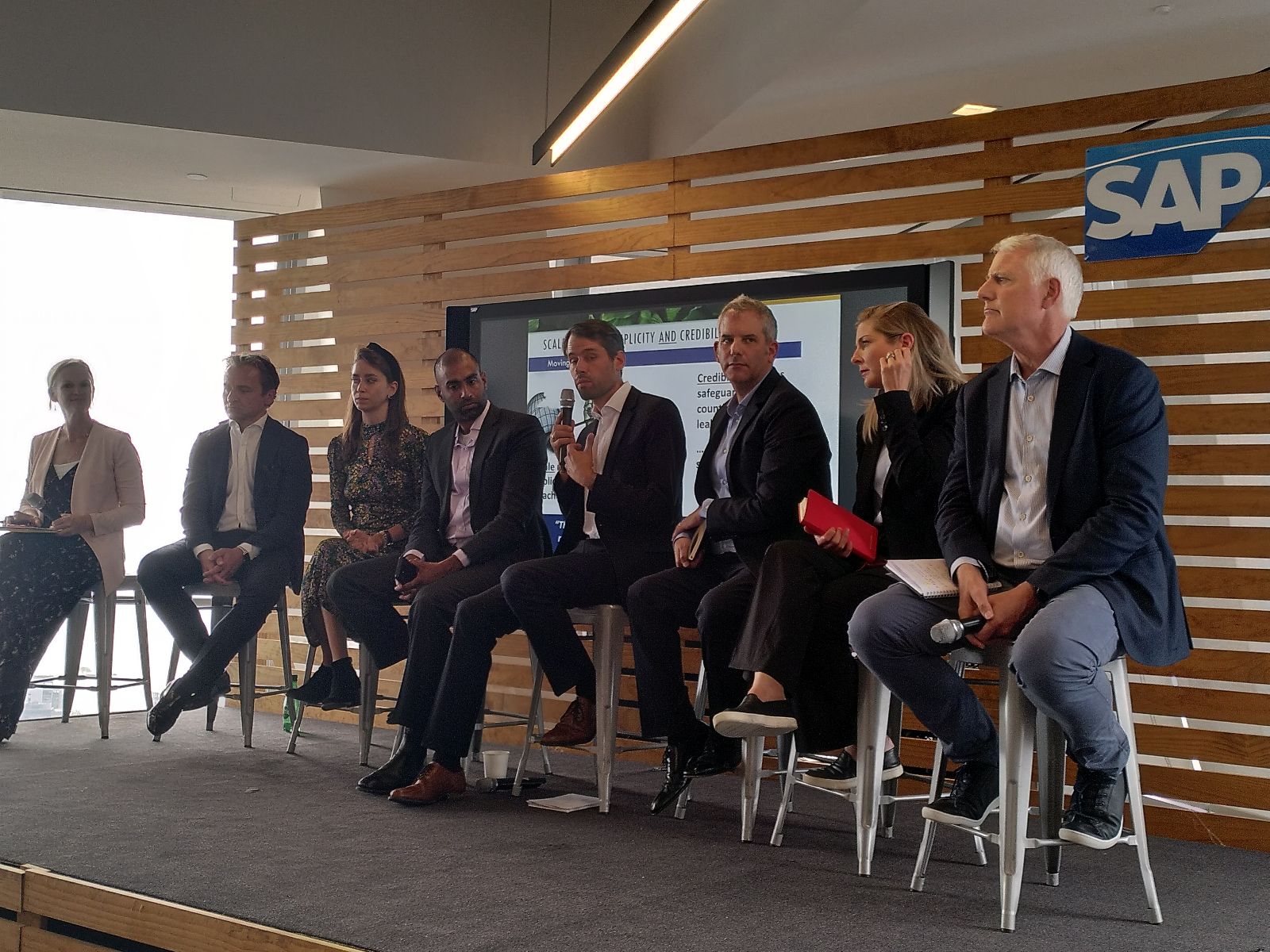It was great to connect with so many of you at the CPIC semi-annual members meeting and to hear your views on CPIC’s approach and future plans. Please take a minute to let us know how we can further improve our members’ meetings, and what might be your preferred way to engage with CPIC going forward.
Here’s a recap of what we covered at the meeting:
- Update on the latest trends in conservation finance and CPIC
- Josep Oriol (Okavango Capital Partners) outlined the five key challenges for nature investments, among them (1) a fragmented supply of capital, especially for mid-scale projects, (2) a range of investors with various needs and requirements, and (3) the need to develop a pipeline of suitable projects addressing those needs.
- Marianne Haahr (Green Digital Finance Alliance) explained how the digital transition has the potential to disrupt green finance through, for example, the aggregation of projects to reach scale and the use of technologies like blockchain in the fisheries sector. Technology-led standardization – such as report automation – is also expected to increase.
- Romas Garbaliauskas (Conservation International, CPIC Transitional Executive Committee member) summarized CPIC’s latest activities, including the publication of several new CPIC blueprints in an easily accessible two-page format, the launch of the Nature+ Accelerator Fund last fall, and the upcoming first edition of the CPIC Conservation Finance Report. Romas also introduced CPIC’s focus areas for the year ahead, which were then covered in breakout sessions as a means to get feedback and insights from members.
- Break out sessions: five 45-minute break out sessions were facilitated by members of the Temporary Executive Committee. Key takeaways from each session are listed below.
- Scale impact through partnerships – Alan Martinez, Cornell Atkinson, and Ned Neaher, White & Case LLP.
- CPIC members would welcome additional opportunities for networking and knowledge sharing throughout the year
- Other opportunities for concrete collaboration include developing joint research outputs and working on project pipeline development
- Scale impact through partnerships – Alan Martinez, Cornell Atkinson, and Ned Neaher, White & Case LLP.
- Convene and engage diverse stakeholders – Frank Hawkins, IUCN
- CPIC should engage actively with project developers and local communities
- One step in that direction is the setup of regional CPIC hubs – starting in East Africa – where CPIC would act as a financial support intermediary bringing together investors and projects
- Provide structuring support to developers and investors – Elmedina Krilasevic, IUCN and Edit Kiss, Mirova Natural Capital
- The Nature+ Accelerator Fund was launched in November 2020 with a first close scheduled for end of Q1 2021
- Participants provided feedback on the main barriers the fund should address, including: providing financial structuring advice and other technical assistance to project developers, aggregating small projects, and supporting intermediaries.
- The CPIC Structuring Working Group will meet on February 10 to continue the conversation on the impact framework. CPIC members that would like to be involved are welcome to contact us at info@cpicfinance.com.
- Replicate promising pipeline opportunities – Romas Garbaliauskas, Conservation International
- Participants shared their perspective and concluded that CPIC blueprints have the potential to be replicated more widely through additional outreach activities
- The Conservation Finance Alliance is open to exploring a series of webinar on the blueprints to help spread awareness
- Other ideas discussed include disseminating blueprints at regional-level events and workshops, tapping into networks of local stakeholders (DFIs, impact hubs, CPIC members regional offices, etc.)
- Some CPIC members have indicated interest in funding technical assistance for organizations to replicate blueprints
- Generate and disseminate science-based knowledge – John Tobin, Cornell University
- Members identified topics for future CPIC research work, including behavioural economics, conservation farming, land conversion, and the drivers of biodiversity loss.
- Participants discussed the lack of a framework for conservation impact measurements that would align the existing tools and metrics and help investors make informed investment decisions.
- Wrap-up and Q&A
- Avril Benchimol (GEF) moderated our wrap up session. She and the session leads explored themes such as the role of CPIC both at the upstream level – facilitating interaction between CPIC members – and at the downstream level – working locally with project developers and regional networks and offices. Blueprints were discussed in more details, and especially their role in helping project developers structure and improve their projects and resulting proposals. More can and should be done to take these blueprints to local stakeholders and facilitate their replication in targeted contexts.
If you would like to engage on any of those topics, please let us know! Contact us at info@cpicfinance.com



